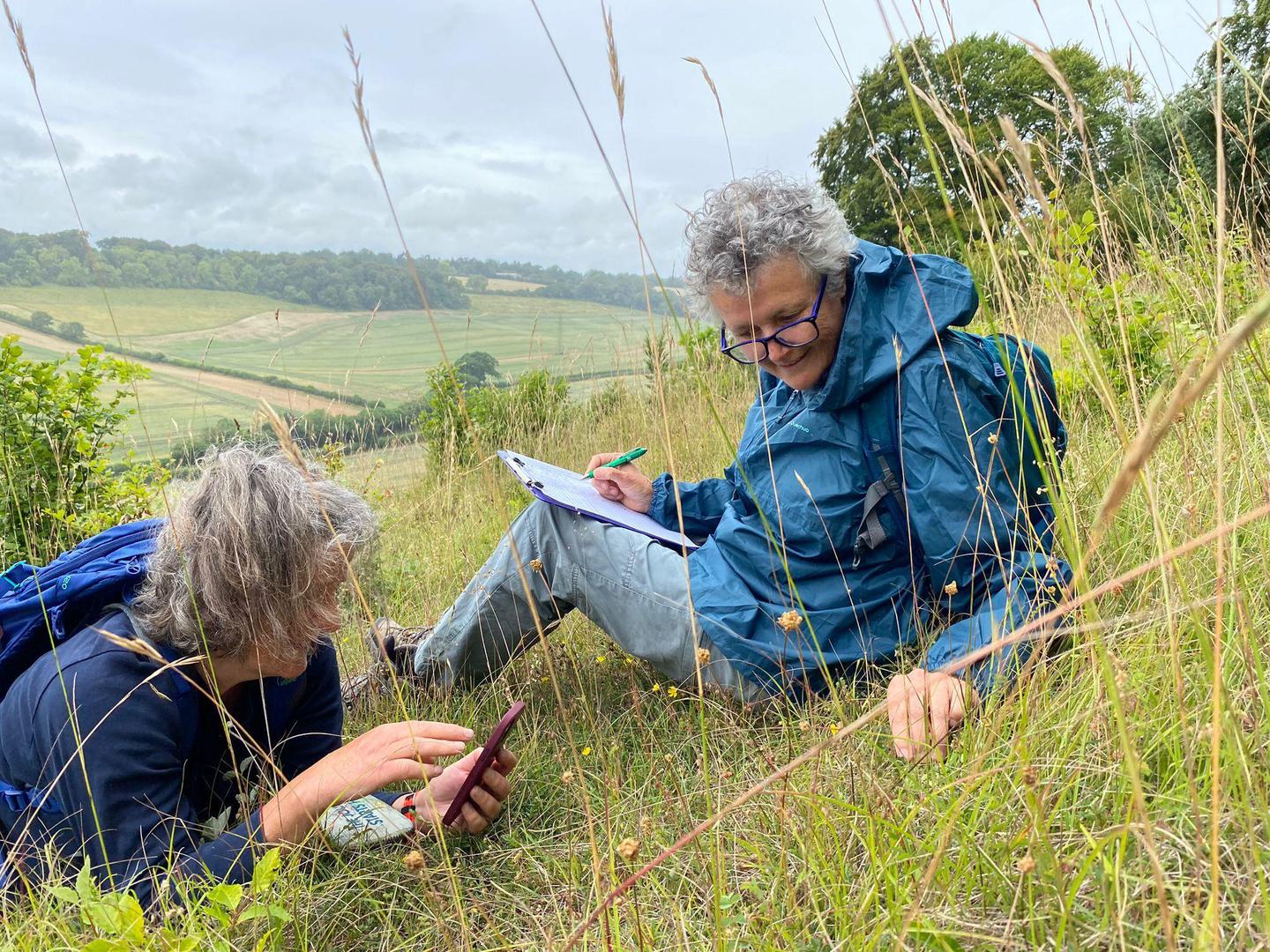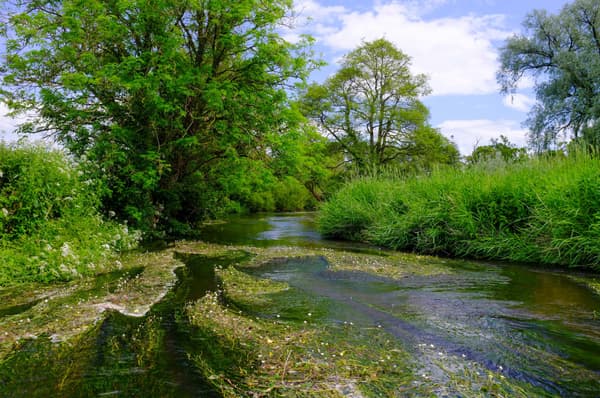The formal launch of Big Chalk, celebrated at the Big Chalk Conference, has treated us all to a feast for the eyes. Few will fail to be moved and inspired by images of beautiful landscapes, rolling chalk downlands, subtle palette of pink, yellow and mauve of chalk-loving flowers, richness of the fauna, and the charm of babbling chalk streams. Joyous stuff!
We’ve been encouraged too to ‘look beyond the scenery’. And to help us, we’ve had a succession of great blogs this autumn, celebrating not just the landscapes and the nature within them, but also the people and partnerships already leading the way to join things up and make change happen in a way that supports nature recovery. So much to applaud!
We know if we are to achieve our big ambitions, it’s critical to make nature and its benefits relevant to more people’s lives.
Working in partnership
The importance of engaging and connecting people with nature is a strand of work that these days is widely embraced – people genuinely love what they know. We know if we are to achieve our big ambitions, it’s critical to make nature and its benefits relevant to more people’s lives.
We can see this commitment in some of the work Big Chalk partners are already nurturing: lots of attention is paid to farmers who steward these landscapes, and rightly so – as Jo Lewis set out in her blog, making a difference and ensuring these landscapes are nature-rich relies heavily on supporting farmers and land managers to make wise choices, and indeed celebrating and amplifying the actions of those that do.
Building people's connection to nature through community involvement in citizen science and hands-on activities like tree planting are well-established approaches, but they still offer immense value—especially when it comes to scaling up nature recovery efforts. Volunteer recorders, like those involved in the Chiltern’s Landscape Partnership’s ‘Tracking the Impact’ project, a landscape-scale wildlife surveying programme, plays a crucial role in expanding the reach and impact of these initiatives.

Tracking the Impact in the Chilterns
All of this is fantastic, but I suggest it is worth asking ourselves a big question: Do we talk enough about ‘people’ when we dream big about nature recovery?
- What about the needs and aspirations of those living in or near these landscapes who may not yet see how nature connects to their daily lives? Are we considering them as much as our core allies?
- Do they feel engaged in what these landscapes have to offer? How connected are they?
- Are we doing enough to help illustrate for people how nature’s solutions can help solve problems, such as local surface water flooding, and in a pretty cost-effective way too?
- How do we bring the benefits of these landscapes to those with the poorest access who often might benefit the most?
- Might a more people-centric mindset help us to build stronger and more resilient approaches, projects with ‘legs’ to take us sustainably into the longer term beyond the bursts of initial funding that get projects off the ground?
And if we are really provocative, are we limiting ourselves and our scope for success by having a narrow view, by coming at this from a starting point of our own traditional ecological values that assumes everyone values the same things?
For some people, nature and access to its benefits may be the ‘cherry on the top’, the ‘nice to have’ that comes after the essentials of life rather than a crucial part of that. We need to avoid being presumptuous about what people want and need. Do we actively seek out and listen to diverse perspectives often enough?
Turning this on its head
The big missions our new government has set out provide a helpful prompt to challenge us to think more creatively, more broadly about how to achieve more nature-rich landscapes and a healthier natural environment. These days, we talk a lot about place-making, an approach that takes account of the specifics of a place, the unique set of challenges and opportunities that can shape how we work with communities and others in partnership.
Rather than arriving to make the case for nature and nature recovery, how about we turn this on its head? I think there is a lot of value in us taking a different starting point, one starting with people and understanding what matters to them. We can ask those who live and work in those places, community groups and their representatives:
- What sort of place do you want to live and work in?
- What sort of place do you want your children to live in?
- What are the problems you want to fix?
- How can we help break down barriers to opportunity?
This is by no means about diminishing the importance of nature recovery or inviting lesser outcomes, and definitely not about inviting harm for the environment. But questions like this enable us build understanding, to find the common ground and ultimately agree on powerful shared ambitions which benefit people and nature.
Nature’s solutions to society’s problems
We think nature’s solutions can help tackle problems, making places great for living and working in; places more resilient in the face of a warmer, wetter and more unpredictable climate; places where the air and water are clean. And we think access to nature-rich green space, accessible and welcoming to all, makes a difference, something equally relevant to urban and rural places. The evidence is really stacking up now about the value of green infrastructure in giving health and wellbeing benefits to individuals and society. But an approach that embraces diverse values and cultural perspectives—such as different relationships with food—can be incredibly powerful for bringing fresh ideas to the table and fostering a shared commitment.
Stronger through inclusion
I think this approach could make a long-term difference to how people feel about nature, how many people feel it is relevant to their lives, and how willing they are to help look after it. With a different starting point, we increase the chances of co-creating projects people will support, and we build ownership of delivery and outcomes. It also opens scope to unlock sources of funding from unexpected places, public and private, especially given the interest in systems thinking and breaking down traditional siloes.
Making the most of opportunities to make a healthy natural environment relevant to everyone’s lives is key to the long term success to initiatives such as Big Chalk. Our Local Authority partners are huge allies in this – they can be conduits for it and can help us understand how to do this better, especially as Local Nature Recovery Strategies are agreed and come into play alongside other tools and broader ambitions.
And I see a role for Big Chalk partners to foster that mindset with the tone we set and the way we encourage and share stories, approaches and best practice.
Our mission is to ‘collectively secure the future of nature in southern England’s iconic chalk and limestone landscapes’ … let’s keep people and communities front of mind in all we do.
By Dr Edel McGurk,
Regional Director, Southeast, Natural England

Join our partnership
Realising our vision depends on building a broad, representative partnership – we do together what we cannot do alone.
If you would like to discuss joining the Big Chalk Partnership, please email David Hoccom.
Register your project
The Big Chalk programme is made up of a dynamic and evolving suite of partner-led projects. These may do different things, cover different areas and have different partners but they all have two things in common – they contribute towards delivering the Big Chalk vision and the Big Chalk Board has agreed they can be registered as a Big Chalk Project.
Once registered, a Big Chalk Project can use the Big Chalk brand on its materials, benefiting from an enhanced profile as well as access to networking, shared learning and best practice. Importantly, Big Chalk Projects are recognised as being part of a collective effort to secure the future of nature in southern England’s iconic chalk and limestone landscapes.
The registration process begins with submission of an online form.
Join a topic group
Knowledge transfer within the Big Chalk Partnership happens through a series of topic groups, which meet online three to four times a year. These currently cover:
- Land management for nature’s recovery
- Working with farmers and land managers
- Developing landscape-scale programmes
- Local nature recovery strategies
- Evidence, data and recording
- Natural capital
- Health, wellbeing & engagement
If you are interested in joining a Big Chalk topic group, please email Bruce Winney.
Become a funder or partner
We would love to hear from you if your organisation can help fulfil our mission and contribute to delivering our vision of nature-rich chalk and limestone landscapes that benefit all of us.
If you would like to discuss funding or partnering with Big Chalk, please email David Hoccom.



